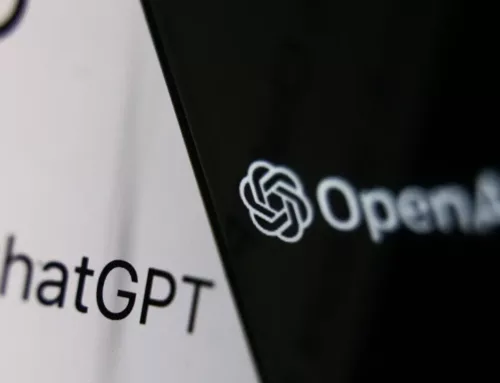Feature image via NPR
Lately, I have begun to wonder how many times the word “unprecedented” can be used in the news before it loses meaning altogether. As society is inundated with stories, numbers, and graphs, detailing the spread and mortality rate of the novel COVID-19, it is important to remember that parallels can be drawn between previous global pandemics and lessons learned for the challenges we are now facing. In fact, health pandemics occur at a disturbingly regular rate. Most recently in 2013, Ebola affected large swathes of Africa, in the late 80s to early 90s the ongoing AIDS epidemic hit the U.S. hard, and if we look even a little further back in history, the Spanish Flu of 1918 presents a similar case study to Coronavirus. Further back still, the Bubonic Plague wiped out between 30-60% of human society in the 1300s, and even biblical times tell stories of widespread plagues. Similarities exist as well between our current state (and our predicted future state) and war-times—when large-scale, global, social and economic impacts have closed shutters, necessitated isolation, and strained resources and economies across the globe.
While a pandemic of this scale or severity may be nothing new, there is one important, unprecedented factor we are experiencing with COVID-19 today: The role that modern technology is playing in the fight against it. Never before has the world been equipped with the level of advanced technology currently at our disposal. With two of the world’s technological giants, China and the U.S., epicentres of COVID-19’s infection and spread, it is interesting to see the ways in which technologies are being used to combat the spread of the virus, diagnose cases, control information, and develop treatments. While quantum technology is still too immature to contribute significantly to the current effort, there are signs pointing to how useful it will one day be in a similar scenario, which we can be sure will eventually arise again. This moment presents a stark opportunity for emerging technologies to take the stage and for the humans behind them to demonstrate how they can be used for the good of society.
China presents a COVID-19 case study characterised by stark contrasts. The country has been on the receiving end of global vitriol and applause within the span of a week for its handling of the situation. Its approach to managing the outbreak has been characterised as draconian, a serious infringement on its population’s civil liberties and human rights—but apparently, it worked. The numbers coming out of China indicate that the country has achieved something few others have yet been able to: a dramatic decrease in cases. While nearly everywhere else, cases continue to skyrocket. It appears China has gained an upper hand over the situation, a battle in which a slew of emerging technologies quite literally held the frontline. Notable among these are China’s use of robotics, drones, Big Data and artificial intelligence (AI).
China’s supercomputer Tianhe-1 has also been put to the job. Using an AI system to compare hundreds of chest scans of potentially infected patients, Tianhe-1 was tested as an alternative to the scarce COVID-19 test kits in China. The results produced by the supercomputer are reportedly ready in seconds—not days—allowing for rapid diagnoses and enabling quicker action to be taken to isolate the ill. This is a function of critical value in the case of a virus where many otherwise “healthy” people act as carriers, manifesting little to no symptoms but remaining highly contagious. According to the source, this technology has a success rate higher than 80% and is able to assist doctors in coping in an inundated healthcare system by doing what a doctor can do in 15 minutes, in just 10 seconds. This system is now employed in over 30 hospitals across China, where supercomputing power combined with an AI system and access to vast amounts of data are empowering it to improve every day.
In the U.S. as well, the most powerful supercomputer in the world—IBM-built, 200 petaflop, Summit—is being employed to help researchers find a treatment for Coronavirus. In February, researchers used Summit to screen a library of 8,000 drug compounds already approved for human use, searching for those most likely to be effective against COVID-19 by simulating reactions with the virus’ own component structure. As with China’s Tianhe-1, Summit was used by researchers to complete a job in two days that would have otherwise taken the team months to complete using classical computers. Over two days, Summit identified 77 small-molecule drug compounds for further research and trial from the original list of 8,000. While Summit is not being used to discover a new drug to cure Coronavirus, it is hoped that this system can speed up trials for the use of existing, approved drugs to combat COVID-19.
These initiatives, empowered by humans but powered by modern supercomputing technology, endow us with the critical component of exponential speed, giving the world’s researchers precious time to diagnose and potentially treat infected patients before healthcare systems become overwhelmed. Both the Chinese system powered by Tianhe-1 and IBM’s Clinical Development system have been made available free of charge during this time. These systems are of critical support in the processes of enabling exponentially quicker diagnoses and anti-viral identification, however they cannot immediately provide what is most sought after: a cure.
Novel drug development is a time-consuming and expensive process, often requiring up to 10 years and billions of dollars. Project Q has previously investigated how quantum computing can be a critical tool in speeding this process up and making it cheaper. With news of the role supercomputers are taking in diagnosing and matching of an existing treatment for COVID-19, it becomes ever-more apparent that quantum computers will be of great value in aiding researchers to discover new drugs to treat and protect against future viral outbreaks. As supercomputers dwarf classical computers in processing power, so too will quantum computers provide an exponential edge over supercomputers to rapidly process mass amounts of information.
Quantum computers will be able to speed up the process of drug development by providing researchers with the ability to compare the combination of any number of compounds, much like what has been done with Summit—but much faster. Unlike Summit, which is bound by its ability to only model a certain level of molecular complexity, quantum computing with be able to simulate a greater array of potentially life-saving compounds. Further, according to early experimental results from recent research by IBM, quantum computing will be able to do so with far greater speed and accuracy than currently possible.
Paired with deep learning AI technology, quantum computing could also help to accurately model exactly how an infectious disease like COVID-19 spreads. This capability requires vast amounts of data, which is something the U.S. government is currently calling on social media companies like Facebook to provide. During this pandemic, it has become clear how valuable and important accurate modelling of the virus’ spread has been to governments and health officials for creating visual representations of the “what ifs”. These models help us to understand not only projections for transmission, but also to simulate and demonstrate how well certain interventions might work. Machine learning algorithms paired with quantum computing power could eventually provide us with more accurate models, helping to both simulate various interventions and help society to understand our own role in prevention, as authorities have tried to communicate through the “flattening the curve” of COVID-19 discourse.
We are learning that in the case of COVID-19, time is of the essence. The spread of the virus is unique in its ability to manifest as asymptomatic in many—creating perfect carriers in a highly globalised, mobile and crowded society. Specialists such as Michael Osterholm, an infectious disease expert, renowned virologist Robert Webster, Jeremy Konyndyk, the former director of USAID’s Office of U.S. Foreign Disaster Assistance, and even Bill Gates have warned society of the next global health pandemic for years. And yet, as is the case with global warming, preparing resources, the public, and responders for a future assailant (no matter how deadly) has never risen to the top of any government’s list of priorities. Now facing this reality, governments are finding their hospitals poorly equipped, society failing to respond to emergency directives, and frontline workers preparing for disaster.
Modern computing technologies are helping to quicken the pace of human ability to cope with COVID-19 and ultimately empowering researchers to beat it in innovative ways. One example of this is the new public-private AI research consortium, c3.ai, which has vowed to put its mission—combining top researchers with a focus on using AI to battle insidious social problem— to the job of combatting the spread of Coronavirus. Social networks and platforms, including Facebook, Google, LinkedIn, Microsoft, Reddit, Twitter, and YouTube have a joint statement on their efforts to combat the spread of misinformation about the pandemic. While these companies already have machine learning algorithms in place to moderate feeds, Facebook, Twitter and Youtube in particular have stated that they will be relying heavily on their AI algorithms at this time, having sent workers home in order to help keep them safe. This moment ostensibly defines a test for imperfect AI systems, where they will be held almost entirely responsible for making human (or, it is hoped, superhuman) judgement calls in moderating information at such a critical time.
There is certainly ample hope that these emerging technologies can be applied to the effect of great social gain. However, we should always be weary that letting modern technologies run at the lead of progress may come at a heavy and unretractable cost to society. China has applied the widespread use of high-surveillance technologies, including a color-coded health-risk rating system that tracks millions of citizens daily and controls the spaces they are allowed into, and hovering drones equipped with facial recognition technology. These technologies are used in a society where most citizens already accept that their technological benefits come with an increased level of surveillance and high levels of government control. However, in the U.S. and elsewhere, COVID-19 has brought this debate to the table. Emergency discussions between America’s Big Tech and the government are underway, where anonymized personal data held by tech giants like Google and Facebook are being requested to help health officials to track and map the spread of infection.
As ever, the line between technology as a help or a harm is complicated and blurred. The case of its use in the battle against COVID-19 is no exception. However, we have the opportunity to look at the choices we face in applying these technologies today in order to inform how we make our decisions tomorrow. If anything, the Coronavirus pandemic can show us that while history might not repeat itself, it does produce both positive and negative feedback loops, leaving us with the ability to make choices as a society that allow us to move forward rather than in circles. It is worth pointing out as a stark reminder of our own humanity during this epidemic, the fact that the most effective tools put forward against combatting the virus are incredibly low-tech, to say the least: hand-washing and social distancing. So, for the moment—we should wash our hands, practice social distancing, be kind to others and, when the time comes, make the right choices about how we might best apply quantum computers for the public good.







Leave a Reply